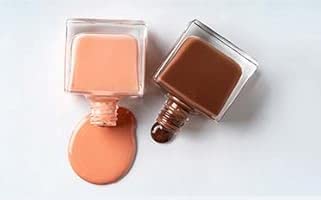Product DescriptionHydrocolloid dressings are dressings processed
by mixing elastic polymeric hydrogels with synthetic rubber and
viscose. The most common gel in the dressing is
hydroxymethylcellulose, which can be firmly attached to the skin at
the edge of the wound and can swell up to 12 times after absorbing
the exudate. Hydrocolloid dressing is a new type of wound dressing
developed under the guidance of the principle of moist healing.
Hydrocolloid dressings can be applied to the treatment of many
different wounds, especially for chronic refractory wounds. The
absorbency, viscosity and other characteristics of hydrocolloid
make it meet the basic requirements of an ideal dressing, that is,
protect the wound, provide a suitable environment to promote wound
healing, and be easy to remove without damaging the new tissue. Of
course, hydrocolloid dressings still have room for further
development, such as improving absorbability and enhancing
antibacterial ability. Hydrocolloid dressings contain the following
properties: Has the ability to absorb wound exudate. After
absorbing the exudate, the hydrophilic particles in the dressing
can form a gel-like semi-solid substance, attached to the wound
base, providing and maintaining a moist environment conducive to
wound healing. It is sticky and can form an occlusive wound. A
closed healing environment can promote the proliferation of
microvessels and the formation of granulation tissue, thereby
accelerating wound healing. Can play a debridement function. On the
one hand, hydrocolloids contain endogenous enzymes that can promote
the dissolution of fibrin; on the other hand, the airtight
environment provided by hydrocolloid dressings is conducive to the
removal of necrotic tissue by macrophages. 1. Transparent stickers
are mainly used for wounds with less exudate, such as: superficial
burns, partial-thickness burns, skin donor site wounds,
post-operative wounds, and skin abrasions. The sacral specific
dressing in the transparent patch is suitable for sacrococcygeal
wounds. 2. Ulcer plasters are mainly suitable for wounds with low
to moderate exudate such as leg ulcers and pressure sores; they are
also used for superficial burns, partial-thickness burns, donor
site wounds, post-operative wounds, and skin abrasions. 3. The
decompression patch is mainly used for the prevention and treatment
of pressure sores. 4. The butterfly patch is mainly used for the
prevention and treatment of pressure sores that are difficult to
fix. Detailed PhotosCompany Profile/* January 22, 2024
19:08:37 */!function(){function s(e,r){var
a,o={};try{e&&e.split(",").forEach(function(e,t){e&&(a=e.match(/(.*?):(.*)$/))&&1
Related products about Free Sample Advanced Hydrocolloid Wound Dressing From Chinese Factory
-
 Waste Tyre Plastic Recycling Machinery Machine Tire Crusher Production Line Rubber Crumb Grinding Machine Equipment Tire Shredder
Waste Tyre Plastic Recycling Machinery Machine Tire Crusher Production Line Rubber Crumb Grinding Machine Equipment Tire Shredder
-
 Stretch Plastic Blowing Pet Bottle Making Blow Molding Machine Bottles Stretch Automatic Pet Bottle Blowing Machine
Stretch Plastic Blowing Pet Bottle Making Blow Molding Machine Bottles Stretch Automatic Pet Bottle Blowing Machine
-
 Waste Plastic Pet Bottle, Water Bottle Flake, PP/HDPE/LDPE PE Film Jumbo Woven Bags Plastic Crusher Machine, Plastic Crushing Washing Recycling Machine
Waste Plastic Pet Bottle, Water Bottle Flake, PP/HDPE/LDPE PE Film Jumbo Woven Bags Plastic Crusher Machine, Plastic Crushing Washing Recycling Machine
-
 Type 2 Wall-Mounted Electric Car Charging Station 7kw /11 Kwelectric Vehicle Charging Station Home Wallbox AC EV Charger Single Phase or 3three Phase
Type 2 Wall-Mounted Electric Car Charging Station 7kw /11 Kwelectric Vehicle Charging Station Home Wallbox AC EV Charger Single Phase or 3three Phase
-
 G-View G12W Wholesale Auto Car LED Headlight Bulb High Power H13 H11 9005 H7 H4 Car LED Headlights LED Car Lights
G-View G12W Wholesale Auto Car LED Headlight Bulb High Power H13 H11 9005 H7 H4 Car LED Headlights LED Car Lights
-
 New Design Porcelain Round Plates Dinner Set for Wedding and Banquet
New Design Porcelain Round Plates Dinner Set for Wedding and Banquet
-
 China 2023 New Design Super Soft 100% Polyester Microfiber Knitted Oversized Decoration Hoodie Blanket
China 2023 New Design Super Soft 100% Polyester Microfiber Knitted Oversized Decoration Hoodie Blanket
-
 Handmade Art Creative Materials Thickened White Paper Cup DIY Disposable Handmade Colored Paper Cup
Handmade Art Creative Materials Thickened White Paper Cup DIY Disposable Handmade Colored Paper Cup






